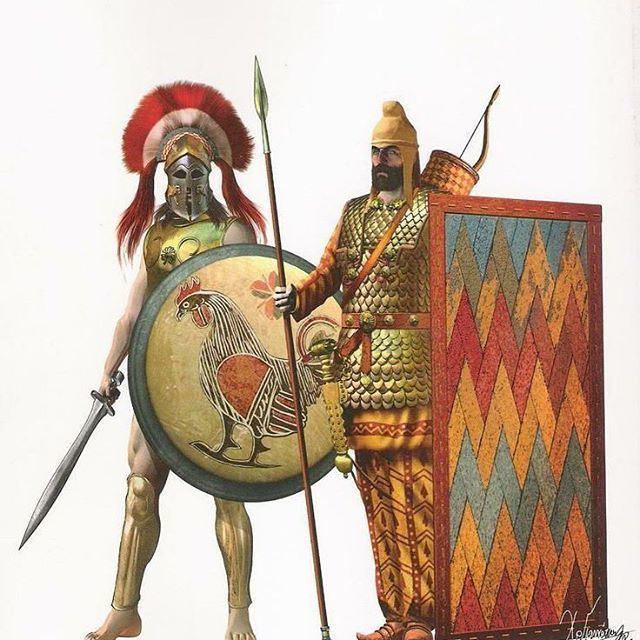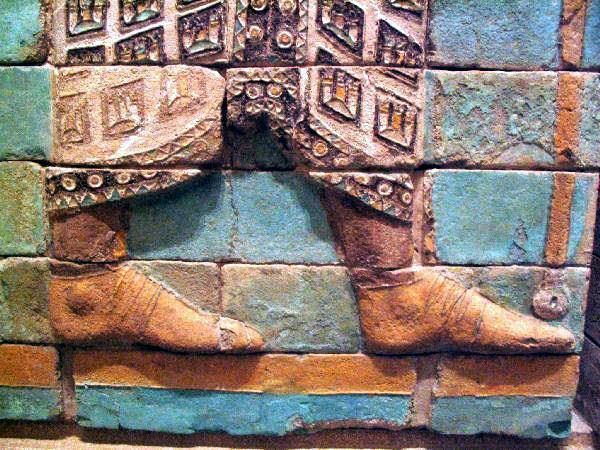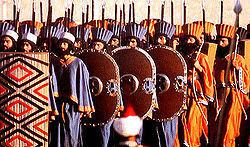 | ||
Similar Spartan army, Cataphract, Ancient Macedonian army, Ten Thousand, Macedonian phalanx | ||
The Immortals (from the Greek Ἀθάνατοι, Athánatoi) also known as the Immortals Army (Persian: سپاه جاويدان) or Persian Warriors (Persian: جنگجویان پارسی) was the name given by Herodotus to an elite heavy infantry unit of 10,000 soldiers in the army of the Achaemenid Empire. This force performed the dual roles of both Imperial Guard and standing army. The force consisted mainly of Persians, but also included Medes and Elamites. Essential questions regarding the unit (even its native name) remain unanswered, because authentic sources are missing.
Contents
- Herodotus
- History
- Equipment
- Sassanid Empire
- Byzantine Empire
- French Empire
- Imperial State of Iran
- In popular culture
- References

Herodotus

Herodotus describes the 'Immortals' as being heavy infantry, led by Hydarnes, that were kept constantly at a strength of exactly 10,000 men. He stated that the unit's name stemmed from the custom that every killed, seriously wounded, or sick member was immediately replaced with a new one, maintaining the corps as a cohesive entity with a constant strength.

This elite corps is only called the 'Immortals' in sources based on Herodotus. There is evidence of the existence of a permanent corps from Persian sources, which provided a backbone for the tribal levies who made up the bulk of the Achaemenid armies. These do not however record the name of "Immortals". "Probably, Herodotus' informant has confused the name Anûšiya ('companions') with Anauša ('Immortals')", but this has been criticized by Rudiger Schmidt.
History

The Immortals played an important role in Cambyses II's conquest of Egypt in 525 BC and Darius I's invasion of India's smaller western frontier kingdoms (western Punjab and Sindh, now in Pakistan) and Scythia in 520 BC and 513 BC. Immortals participated in the Battle of Thermopylae 480 BC and were amongst the Persian occupation troops in Greece in 479 BC under Mardonius.

During the final decades of the Achaemenid empire, the role expected of the hazarapatish (commanding officer) of the Immortals was extended to include that of chief minister to the king. The provision of a bodyguard, in direct attendance on the monarch, had already been allocated to a select thousand strong detachment of the corps.
Equipment

Herodotus describes their armament as follows: wicker shields, short spears, quivers, swords or large daggers, slings, bow and arrow. Underneath their robes they wore scale armour coats. The spear counterbalances of the common soldiery were of silver; to differentiate commanding ranks, the officers' spear butt-spikes were golden. The regiment was followed by a caravan of covered carriages, camels, and mules that transported their supplies, along with concubines and attendants to serve them; this supply train carried special food that was reserved only for their consumption.

The headdress worn by the Immortals is believed to have been the Persian tiara. Its actual form is uncertain, but some sources describe it as a cloth or felt cap which could be pulled over the face to keep out wind and dust in the arid Persian plains. Surviving Achaemenid coloured glazed bricks and carved reliefs represent the Immortals as wearing elaborate robes, hoop earrings and gold jewelry, though these garments and accessories were most likely worn only for ceremonial occasions.
Sassanid Empire
The title of "Immortals" was first revived under the Sassanid army. The most famous of the Savaran units were the Zhayedan (Immortals) and numbered 10,000 men, like the Achaemenid predecessors, with the difference that they were cavalry. Their task was mainly to secure any breakthroughs and to enter battles at crucial stages.
Byzantine Empire
The designation "Immortal" to describe a military unit was used twice during the Byzantine Empire, first as an elite heavy cavalry unit under John I Tzimiskes (r. 969–976) and then later by Nikephoritzes, the chief minister of Emperor Michael VII (r. 1071–1081), as the core of a new central field army, following the disastrous defeat of Manzikert by the Seljuk Turks in 1071.
French Empire
Many centuries later, during the Napoleonic Wars, French soldiers referred to Napoleon's Imperial Guard as "the Immortals".
Imperial State of Iran
The Iranian Army under the last Shahanshah included an all volunteer Javidan Guard, also known as the "Immortals" after the ancient Persian royal guard. The "Immortals" were based in the Lavizan Barracks in Tehran. By 1978 this elite force comprised a brigade of 4,000–5,000 men, including a battalion of Chieftain tanks. Following the Iranian Revolution of 1979 the "Immortals" were disbanded.
Their signature shield is adopted in the insignia of the 65th Airborne Special Forces Brigade and 55th Airborne Brigade of the Iranian Army.
In popular culture
Herodotus' account of two warrior elites - the Spartan hoplites and the Immortals - facing each other in battle has inspired a set of rather colorful depictions of the battle, especially in regard of the Immortals:
